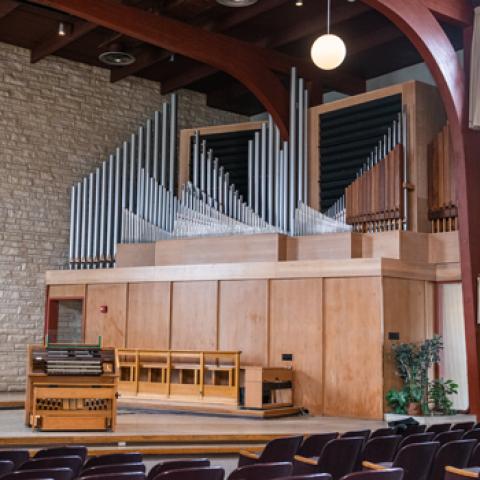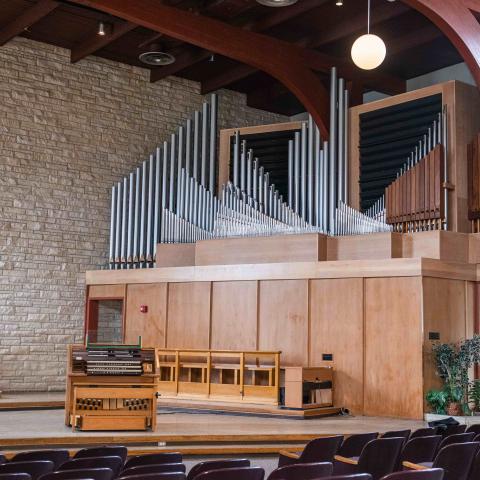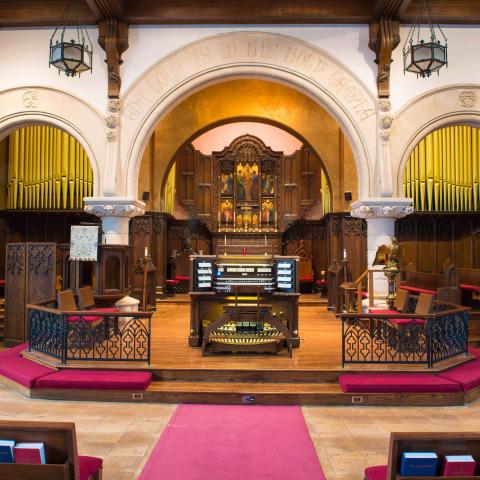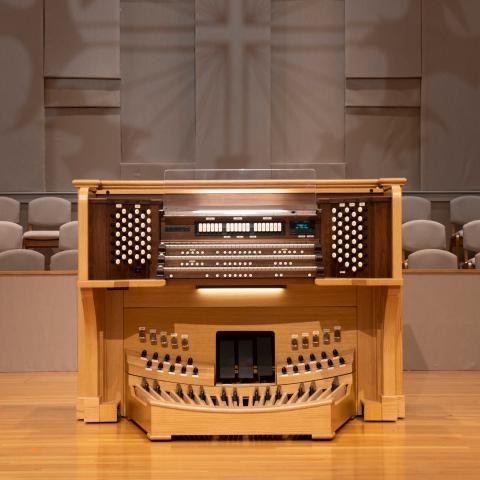The All Faiths Chapel Memorial organ is featured by David Pickering, Professor of Music at Kansas State University, in a performance of the overture to Felix Mendelssohn's oratorio Paulus, transcribed for organ by William Thomas Best. This recording features a live performance of this work given on February 4, 2022.
The organ at the chapel was built in 1961 by Austin Organs, Inc., as their Opus 2352: 32 voices, 40 ranks, 2,458 pipes. This organ, designed by James B. Jamison, tonal architect at Austin Organs, Inc., from 1933 to his death in 1957, reflects the builder’s tonal ideals of the 1950s, which differed in some ways from those of the American Classic movement.
Quimby Pipe Organs, Inc., completed thorough restoration in 2022, which included note and stop action releathering, pipe cleaning, stenciling, and tonal regulation, new tuning slides (particularly for exposed pipework), wind reservoir repair, and reed cleaning.
The organ is featured on the cover of the August 2022 issue of THE DIAPASON.
For information: quimbypipeorgans.com







